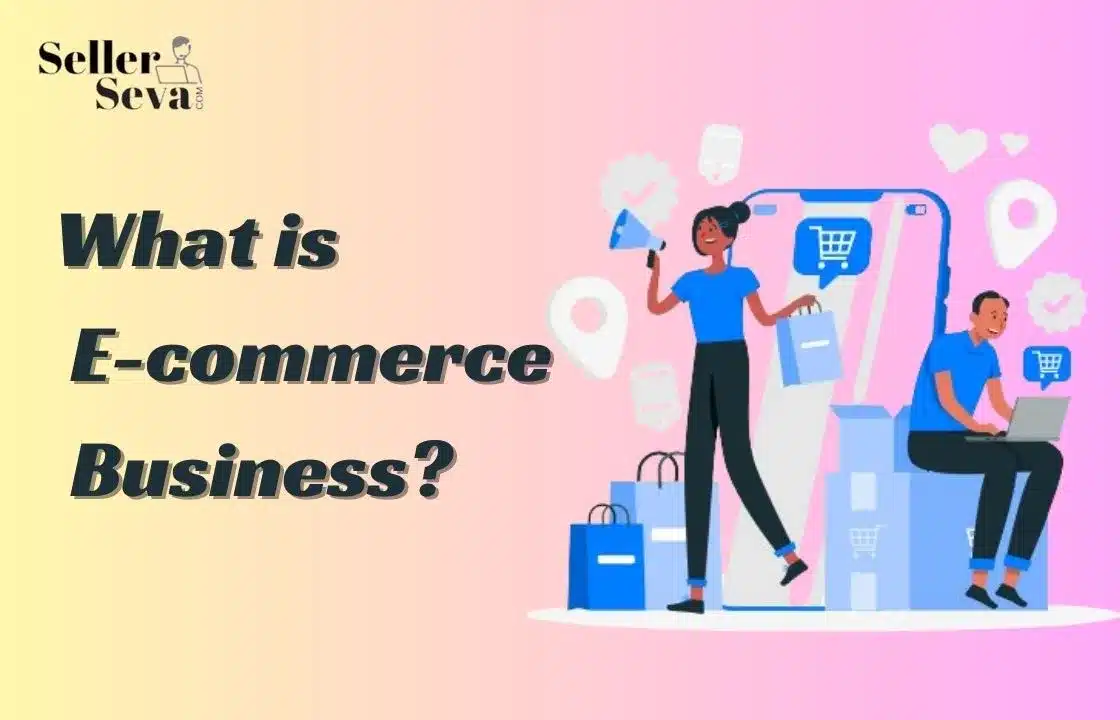
Table of Contents
Introduction
E-commerce is the process of conducting business through the online sale and purchase of products and services. This can be done through a mobile application, website, social networking site, or an e-shop. Just connect your device to the internet, and that is all you require. Some of them are online shopping, electronic payments, online auctions, and internet banking services. Marketing involves the use of web-based tools to effectively and efficiently market products online.
The History of E-commerce
The exact beginning of e-commerce dates back to the early 1970s. However, the first legal online transaction took place in 1994. Once, one person sold a CD to another, which was located 300 miles away. Following that e-commerce started booming. Amazon and eBay started in 1995 while PayPal began in 1998. Now we have social commerce, mobile wallets, and AI tools in e-commerce.
How Does E-commerce Work?
Once a customer makes a purchase, he or she receives the purchased item through shipping, store pickup or local pickup. Examples of non-tangible goods include PDF documents, online classes, and the like. E-commerce transactions occur on different devices and online platforms. Payment solutions can include credit cards, debit cards, and newer methods such as digital wallets.
Types of E-commerce Platforms and Sales Channels
You may sell online via your website and through other web platforms owned by other companies. Most of the sellers utilize the multi-channel selling strategy, which involves selling through different channels.
E-commerce Platforms: E-commerce platforms allow you to sell actual products through your website. They provide services to construct an online store, create a catalogue, and make a merchant accept payments. They also make it possible for people to begin selling. But then you have to advertise incessantly to get people to visit your site.
Online Marketplaces: Selling platforms such as Amazon or Etsy allow you to sell to an active population. These sites usually have traffic that comes to them naturally, so you do not have to market yourself much. However, developing a brand presence on these sites is more difficult. You do not own your customer lists and have little say in how your store looks and feels.
Social Selling Channels: Other social media platforms like Facebook and Instagram have integrated buying and selling features within the applications. This allows small businesses to market and sell their goods directly to their audience. Further, It does not require efforts to build an e-commerce website to sell to existing followers. But you don’t own the audience. If your account gets hacked or deleted, or the platform closes, you have to recreate your audience.
Where and How Does E-commerce Take Place?
E-commerce involves the use of computers, phones, tablets and other devices to shop. Customers go to websites, social media profiles, and other platforms to search for products. Companies of all sizes utilize e-commerce to access customers from across the world. Some have shifted to using only e-commerce while others use it in conjunction with other channels.
Payment Methods for E-commerce
There are various means through which consumers can use to make payments for goods and services they purchase online. E-commerce platforms sometimes work with payment processors or provide their payment services. These include:
- Credit cards through a payment processor
- Portable payment methods like Google Pay and Apple Pay
- Subscription services, also known as ‘buy now, pay later’ (BNPL)
- Recurring billing for subscriptions
- In-store payments for online orders
Types of E-commerce Businesses
E-commerce businesses vary by who they sell to:
- Business to Consumer (B2C): Direct business to customers (e.g., an online shoe store)
- Business to Business (B2B): Sells to another business organization (for example a software developer selling licenses)
- Consumer to Consumer (C2C): People sell to people (for instance, selling a second-hand sofa on an online platform)
- Consumer to Business (C2B): Customers buy from companies (for example – an influencer promoting a particular brand)
Revenue Models in E-commerce
E-commerce businesses use different revenue models:
- Sales Model: The exchange of goods and services to generate income
- Subscription Model: Subscription-based Revenue
- Advertising Model: Profits from advertising contracts
- Affiliate Model: Making money through the usage of affiliate links
- Transaction Fee Model: Charging a fee on each sale
What is an E-commerce Website?
An e-commerce website is an online site that displays products for sale and allows customers to make purchases. It serves as a catalogue with listed products, categories, and reviews from buyers.
Steps to Starting an E-commerce Business
- Research business ideas
- Make demand for your products predictable
- Determine how to market and distribute products
- Find suppliers and manufacturers
- Choose online sales channels
- The final step is to build a website or an online store
- Plan your fulfilment strategy
- Attract customers with promotions
Benefits of E-commerce Businesses
E-commerce businesses offer several advantages:
- Convenience: Consumers can shop at any given time they choose.
- Increased Reach: Market your products to individual and business customers from across the globe.
- Personalization: Engage customers by using their data.
- Lower Costs: Less initial and ongoing expenses compared to physical retail outlets.
Challenges of E-commerce Businesses
E-commerce also has challenges:
- Security: Always conduct secure transactions to avoid compromising customers’ information.
- Competition: Differentiate yourself with unique products and have good customer service.
- Shipping and Logistics: Ensure that products are delivered on time and in good condition.
- Returns and Customer Service: Deal with calls and complaints promptly.
Top E-commerce Trends
Stay updated on trends to remain competitive:
- Social E-commerce: Promote different products and services on social media platforms.
- Mobile Commerce: Mobile commerce is on the rise and firms should ensure that their websites are optimized for mobile devices.
Conclusion
E-commerce is a popular technique to market and sell products and services over the Internet. It provides convenience, coverage, and customization advantages over consumer and business audiences. But it also has some drawbacks such as security issues, competition and organizational problems. It is important to be aware of current trends and always make sure that the company’s customers’ needs are fully met. Whether you are new in the market with a new idea or you are a well-established firm, e-commerce opens doors for endless growth and success for any business. Starting your e-commerce business with the help of Seller Seva can ensure you have the support and expertise needed to navigate these challenges and achieve your business goals.
Frequently Asked Questions (FAQs)
01. How do e-commerce payments work?
E-commerce payments can include credit cards, digital wallets such as Apple Pay and Google Pay, buy now, pay later options, and subscriptions.
02. What is a C2B e-commerce business?
C2B stands for consumer-to-business e-commerce business where people, for instance, influencers, sell their products or services to companies.
03. What are some e-commerce revenue models?
Sources of income are product/service sales, membership, sponsored articles and links, and commission for each completed transaction.
04. What is mobile commerce (m-commerce)?
The term “m-commerce” describes purchasing goods online via mobile devices. It is growing rapidly and becoming a significant part of the e-commerce market.
05. How can businesses ensure e-commerce security?
Businesses can implement proper measures with machine authentication payments with certified payment gateways, SSL certificates, and proper defence mechanisms to protect the clients’ data.
